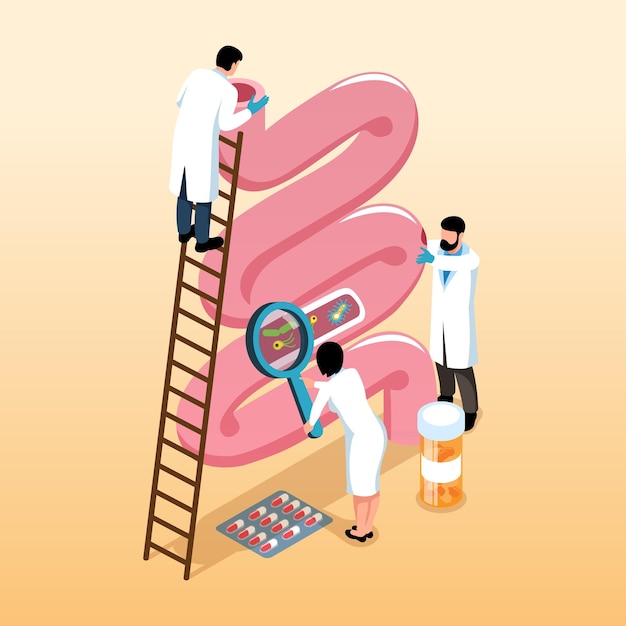
Getting a colonoscopy might sound a little intimidating, but it’s an essential screening tool that can save lives by detecting colon and rectal cancers early.
### Why Should You Get a Colonoscopy?
While colorectal cancer is more common in older adults, it’s becoming increasingly prevalent among younger people as well. That’s why experts strongly recommend starting regular screenings at age 45 and continuing as needed. Colorectal cancer is one of the leading causes of cancer-related deaths in both men and women, but the good news is that catching it early through screenings significantly improves treatment outcomes and survival rates.
A colonoscopy is a procedure where a healthcare provider uses a thin, flexible tube equipped with a light and camera to examine your colon and look for any abnormal growths, including polyps. Polyps can turn cancerous if left untreated, so they’re typically removed during the procedure. For a successful colonoscopy, your colon must be thoroughly cleaned out for clear visibility, which is where preparation becomes crucial.
### Tips for a Smooth Colonoscopy
#### 1. Adjust Your Diet Beforehand
A few days leading up to your colonoscopy, switch to a low-fiber diet. This means avoiding foods like beans, nuts, seeds (including those in fruits such as kiwi), and many vegetables. These foods are usually good for your health but can leave residue in your colon, which might interfere with the cleansing process.
#### 2. Stick to Clear Liquids
On the day before your procedure, you’ll need to completely avoid solid foods and switch to a clear liquid diet. Contrary to what the name suggests, this doesn’t mean the liquids must be colorless, but they should be free of pulp and particles. Good options include:
– Clear broth (for a savory option)
– Coffee or tea without cream or sugar
– Sparkling or plain water
– Sports drinks (but avoid red, blue, or purple colors)
– Ice pops, gelatin, or flavored drinks in colors like lemon and lime
Make sure to avoid any red, blue, or purple liquids because they could be mistaken for blood during the procedure.
#### 3. Don’t Fear the Prep—There Are Easier Ways Now
Bowel prep has come a long way! Gone are the days when you had to down an entire gallon of unpleasant laxative liquid in one sitting. Nowadays, there are different prep solutions available, depending on your doctor’s instructions. Many people use a “split prep,” where you drink half the solution the night before and the other half in the morning before your procedure.
To make it more bearable, you can chill the prep solution in the fridge, add flavor enhancers like Crystal Light, drink it with a fun straw, and suck on candies (as long as they aren’t red, blue, or purple). Just take your time sipping—there’s no need to chug it all at once.
#### 4. Set Up a Comfortable Bathroom Space
Let’s be real: you’ll spend a fair amount of time in the bathroom during the prep process. It can take anywhere from an hour to several hours to fully clean out your system. To make this time more manageable, consider these tips:
– Wear comfy, easy-to-remove clothes.
– Use soft toilet paper and blot instead of wiping to avoid irritation.
– Stock up on soothing products like baby wipes, rash ointments, or medicated pads to minimize discomfort.
– Bring some entertainment! This is the perfect time to binge a favorite show, read a book, or catch up on podcasts.
#### 5. Double-Check Your Medications
Most medications, both prescription and over-the-counter, can be taken as usual up to the day of your colonoscopy. However, if you’re on certain medications like blood thinners or insulin, consult your doctor before the procedure to ensure proper adjustments are made.
### What to Expect on the Day of Your Colonoscopy
During the procedure, you’ll be sedated using a short-acting anesthetic delivered via IV. This ensures that you don’t feel any pain and likely won’t remember much about the process. The procedure itself is pretty quick, generally lasting about 30 to 45 minutes, depending on whether anything like a polyp needs to be removed.
Once it’s over, you’ll recover from the sedation in a designated area for 30 to 45 minutes before being discharged. You’ll need someone to drive you home, as the sedation may leave you drowsy. Most people return to their normal routine by the next day.
Your doctor will follow up with the results a few days after the procedure. If any polyps were removed, you might need more regular screenings depending on the findings. If everything looks normal and you don’t have a family history of colorectal cancer, you may not need another colonoscopy for up to 10 years.
### The Bottom Line
Getting a colonoscopy might not sound like fun, but it’s a vital step in catching colorectal cancer early and potentially saving your life. With the right preparation and mindset, the process can be much easier and less intimidating than you expect. Early detection makes a big difference, so don’t put it off!